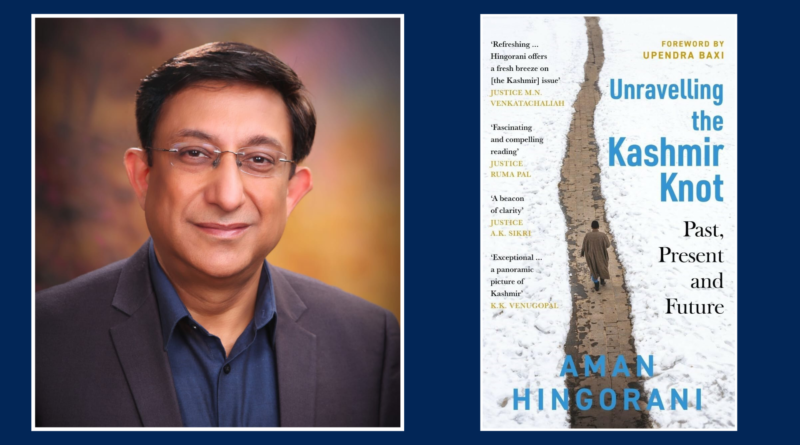Decoding A Quagmire: Aman Hingorani’s ‘Unravelling the Kashmir Knot’ Sheds Light on A Centuries-Old Conflict
By: Syed Ali Taher Abedi
Aman Hingorani’s “Unravelling the Kashmir Knot” presents a comprehensive and multifaceted analysis of one of the most protracted and contentious conflicts in modern history. The book aims to dissect the intricacies of the Kashmir dispute, providing a detailed account of its historical origins, political developments, and the socio-cultural ramifications that continue to shape the region. Hingorani, a seasoned legal expert with a deep understanding of South Asian geopolitics, employs a methodical approach to elucidate the complexities surrounding Kashmir.
Historical Context and Analysis
Hingorani’s work is rooted in a thorough examination of the historical backdrop of the Kashmir conflict. The author navigates through the Partition of India in 1947, the subsequent princely state of Jammu and Kashmir’s accession to India, and the ensuing territorial disputes between India and Pakistan. Hingorani’s historical narrative is well-researched and presents a balanced view of the events that have led to the current situation. He effectively contextualizes the geopolitical and strategic interests of the major stakeholders, including India, Pakistan, as well as the local Kashmiri perspectives.
One of the strengths of the book is its nuanced discussion of the legal and political frameworks that have shaped the conflict. Hingorani, with his legal background, offers an insightful critique of the United Nations resolutions, bilateral agreements, and the role of international law in resolving or perpetuating the dispute. His analysis of the Instrument of Accession and its implications for the legal status of Kashmir is particularly noteworthy.
Political Dynamics and Current Developments
The book’s exploration of contemporary political dynamics is both thorough and critical. Hingorani does not shy away from addressing the internal and external political manoeuvres that have influenced the conflict. His examination of the rise of nationalism, the impact of terrorism, and the role of international actors provides a comprehensive understanding of the modern complexities of the Kashmir issue.
Hingorani’s critical stance on the policies and strategies adopted by the Indian and Pakistani governments is evident throughout the book. He critiques the failed attempts at peace negotiations, highlighting the missed opportunities and the often-counterproductive measures that have exacerbated tensions.
Socio-Cultural Implications
The book’s exploration of the socio-cultural dimensions of the Kashmir conflict adds depth to the narrative. Hingorani provides an empathetic account of the human cost of the conflict, including the displacement, loss, and trauma experienced by the Kashmiri people. His attention to the socio-economic conditions and the impact of prolonged unrest on everyday life in the region is both poignant and informative.
Hingorani also examines the role of cultural and religious identities in shaping the conflict. His analysis of how these identities have been mobilized and politicized by various actors adds a layer of complexity to the understanding of the conflict. This aspect of the book is crucial for grasping the full scope of the Kashmir dispute beyond the political and territorial dimensions.
Criticisms and Limitations
While “Unravelling the Kashmir Knot” is a commendable and thorough examination of the Kashmir conflict, it is not without its criticisms. Some readers might find Hingorani’s approach to be somewhat Eurocentric in its reliance on legal frameworks and historical precedents. His focus on international law and diplomatic efforts, while important, might overshadow the grassroots-level dynamics and the voices of local Kashmiri populations.
Additionally, Hingorani’s critical perspective on the policies of the Indian and Pakistani governments, while well-argued, may come across as somewhat one-sided. The book could benefit from a more balanced critique that also considers the internal challenges and constraints faced by these governments.
Conclusion
“Unravelling the Kashmir Knot” is a significant contribution to the discourse on the Kashmir conflict. Aman Hingorani’s meticulous research, critical analysis, and comprehensive approach make it an essential read for scholars, policymakers, and anyone interested in understanding the complexities of one of the world’s most enduring conflicts. Despite some limitations, the book provides valuable insights into the historical, political, and socio-cultural dimensions of the Kashmir dispute, making it a vital resource for navigating the intricate landscape of South Asian geopolitics.




